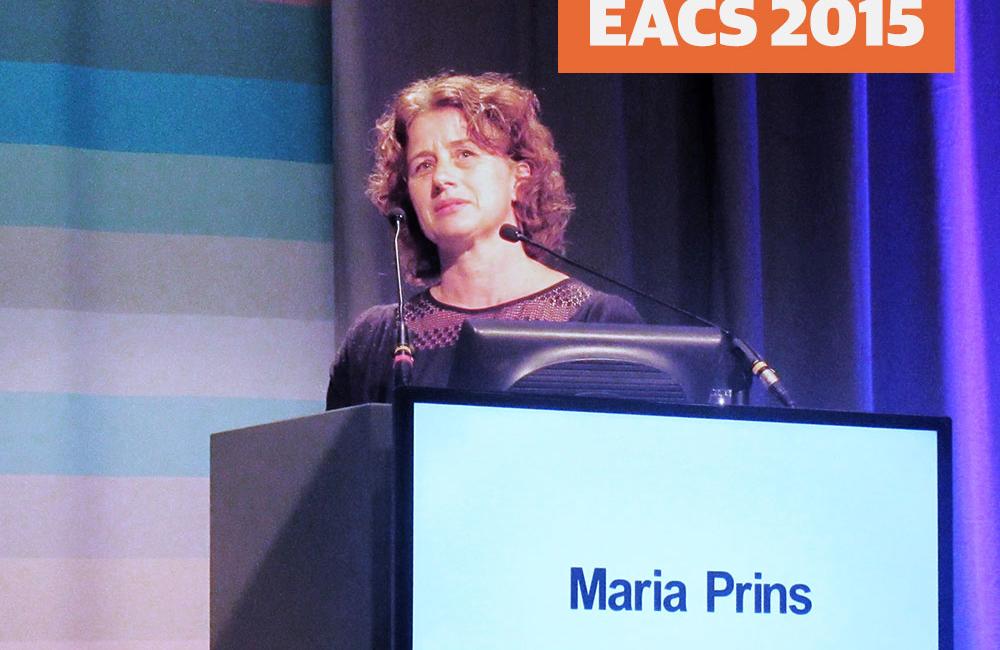
Researchers have seen no decline in new hepatitis C virus (HCV) infections among HIV-positive men who have sex with men in 16 European CASCADE cohorts, according to a poster presented at the recent 15th European AIDS Conference in Barcelona, Spain. However, trends seem to differ between various regions of Europe.
Starting in the early 2000s, researchers in the UK and elsewhere in Europe began reporting clusters of apparently sexually transmitted acute HCV infection among HIV-positive gay and bisexual men in major cities; similar outbreaks followed in Australia and the US. A number of risk factors have been implicated – including condomless anal sex, fisting, group sex and non-injecting recreational drug use – but these have not been consistent across studies.
Maria Prins of the University of Amsterdam, who presented the findings, and colleagues with the CASCADE Collaboration estimated trends over time in HCV incidence among HIV-positive gay and bisexual men, and looked at associations between HCV incidence and age, HIV viral load, CD4 cell count and geographical region.
This analysis used data from nearly 6000 men in 16 of the 29 CASCADE (Concerted Action on SeroConversion to AIDS and Death in Europe) cohorts of HIV seroconverters, or people with well-estimated dates of HIV infection. Cohorts were included if at least half the participating men who have sex with men (MSM) had been tested for hepatitis C using either antibody or HCV RNA tests.
Follow-up time was calculated in two ways. The researchers explained that Method 1 would tend to under-estimate HCV incidence, while Method 2 would tend to over-estimate it:
- Method 1 looked at 5953 MSM followed from the time they became at risk for HCV infection, defined as enrolment in a cohort, the start of routine HCV testing of a cohort or HIV seroconversion.
- Method 2 looked at 4326 MSM followed from their first negative HCV test after they became at risk.
Selected participants were negative for HCV at the start of the follow-up period.
The date of HCV infection was estimated as the midpoint between the last negative HCV test and the first positive one.
Over a median follow-up period of four years, a total of 337 new HCV infections occurred using Method 1, or 279 new infections using Method 2.
HCV incidence rose steadily, from 0.7 infections per 1000 person-years in 1990 to 18 per 1000 person-years in 2014 using Method 1, or from 3 to 21 per 1000 person-years using Method 2. While some prior studies have suggested a levelling off of HCV incidence among MSM in some cities, this analysis saw no decline when looking at Europe as a whole.
However, Prins noted, HCV incidence trends differed by region. While new HCV infections still appear to be increasing in Southern Europe and Northern Europe, incidence in Western Europe seems to be stabilising.
In a multivariate analysis, the likelihood of HCV infection was greater among men with a higher HIV viral load, though this study did not see a significant association with CD4 count. In both 2000 and 2010, HCV incidence peaked at around age 35 among gay men and then declined.
"Our data show no decline of the HCV incidence after 2007 among HIV-positive MSM, suggesting on-going HCV transmission," the researchers concluded. "In contrast to other studies, no association with CD4 count was observed. Interestingly, higher HIV RNA was associated with higher [HCV] incidence."
In their abstract the investigators suggested that, "Scaling-up preventive measures and HCV testing and treatment with direct-acting antivirals could lead to a decline or stabilisation of the HCV incidence among HIV-positive MSM."
Van Santen DK et al. (Prins M presenting) No decline in hepatitis C virus (HCV) incidence among hiv-positive men who have sex with men (MSM) within CASCADE: 1990-2014. 15th European AIDS Conference. Barcelona, abstract BPD2/7, 2015.
